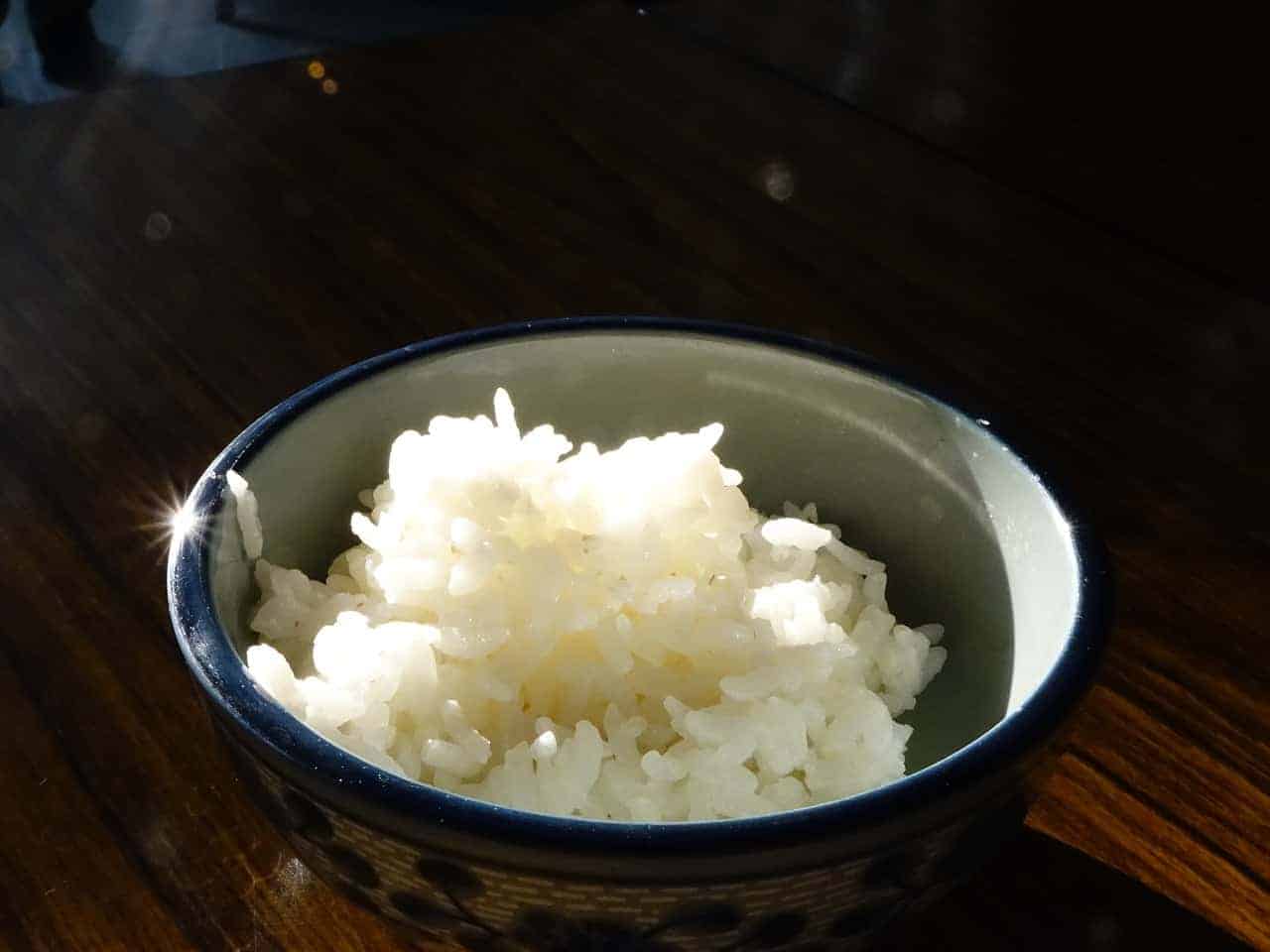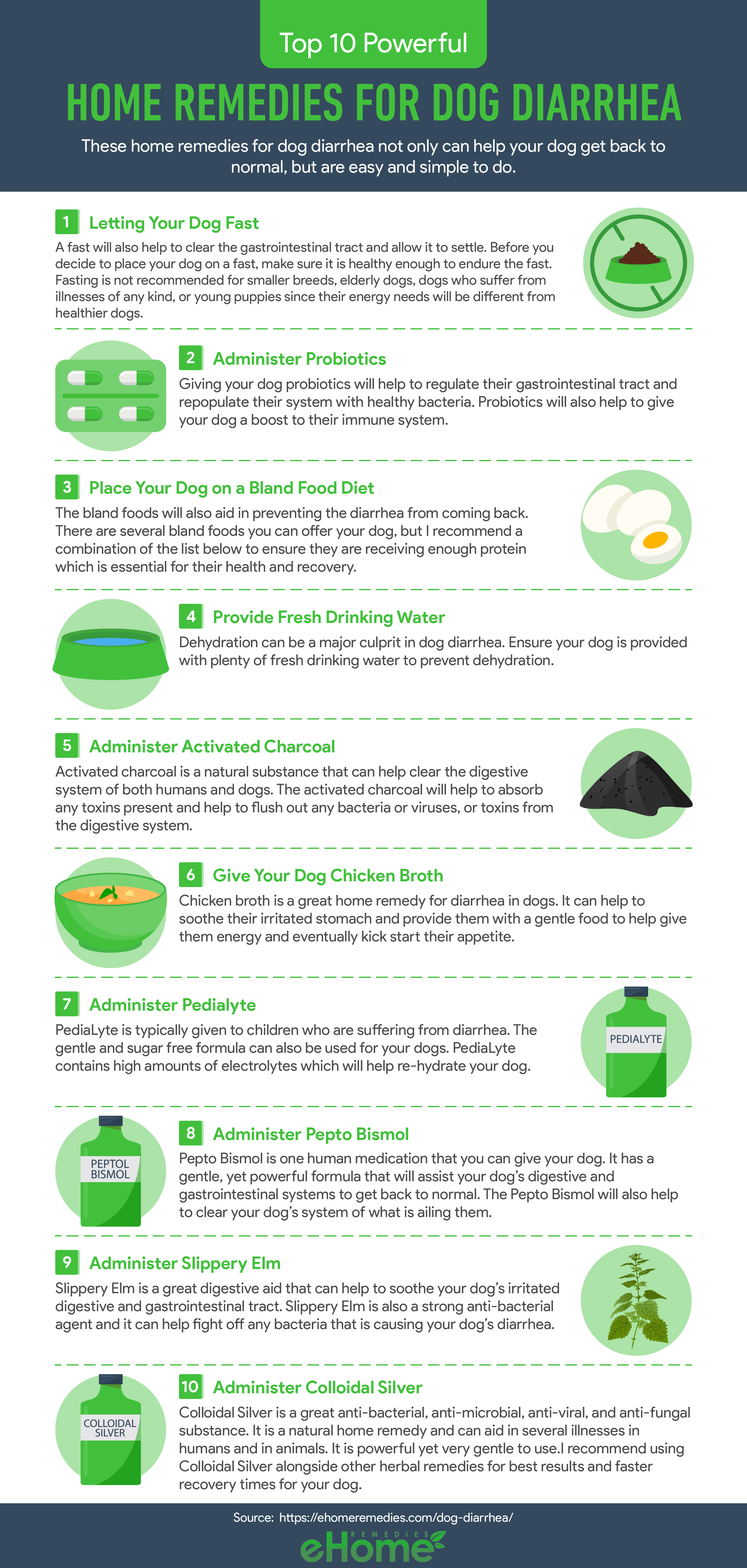If your dog has diarrhea, you are not alone. According to a recent survey by the American Animal Hospital Association (AAHA), approximately 50% of dogs have had diarrhea at some point in their lives with nearly 10% experiencing it in the last year. The good news is that there are many home remedies for dog diarrhea and this post covers ten of them!
The average dog produces around 20 to 30 pounds of poop per year, and that's just from one kind. Let me share with you an important element in dog health: their feces. You'll be surprised to know that dogs' poop is actually quite interesting and can tell us so much about them!
What Stools Can Tell You About Your Dog’s Health
This might sound disgusting, but you can actually learn a lot about your dog's health by examining their stool. If they're eating well and producing stools with no sign of blood or mucus, this is an indication that they are healthy. Furthermore, the size and shape of the poop will tell us if something may be wrong- for example, small round poops could mean worms while large oval-shaped droppings could indicate inflammatory bowel disease in dogs (IBD).
First, let me share with you what the ideal dog poop should look like. You’ll want to pay attention to these factors:
- Color: the ideal color is chocolate brown. If you are giving your dog a food that has a strong color such as carrots or fresh greens, these colors will of course be reflected in their feces.
- Shape: The shape of the stool should be similar to a log and maintain its shape.
- Consistency: Normal dog feces should be moist, compact, and easy to remove from the ground. Not to be gross, but it should feel similar to play-doh.
- Size: the size of the feces should reflect the amount of food you are giving your dog.
- Content: If there is any mucus, white bits that resemble grains of rice, blood, hair, or grass, it could indicate your dog has a problem and it is advised to seek out a veterinarian!
Ok, now that you know what the perfect poo should be like, let me share with you what abnormalities to watch out for and what they can mean for your dog.
Colors
- Chocolate brown: normal and healthy stool
- Green: Excessive grass or fresh greens consumption, or a gall bladder issue
- Orange or Yellow: may be a liver or biliary issue
- Red Streaks: blood present in your dog’s stool -could indicate tears in the anus
- Black and tarry: could indicate bleeding in the upper gastrointestinal tract
- Grey and greasy: could be a biliary or pancreas issue
- White Spots that resemble grains of rice: indication of worms
Consistency
Paying close attention to the consistency of your dog’s feces is vital to determine any present health issues. If your dog has a one-off strange looking poo, chances are they could have gotten into something they shouldn’t have. However, if you are consistently noticing a change in their feces in a 24 hour period, chances are there is something wrong.
This fecal scoring chart that was developed by Nestle Purina, is the perfect imagery for deciphering your dog’s feces.
The ideal place for your dog to be is a score of 2 or 3.

For a healthy dog, it can be hard to tell if they are sick just by looking at them. But you should make sure there is no change in the color and consistency of your pup's poop each day because that could mean something has changed for their system!
What Causes Dog Diarrhea?
Now that you know what to look for when your dog eliminates in the yard, you will definitely be able to spot diarrhea if your dog has it. There are many determining factors that can cause diarrhea in small dogs and even the largest of breeds.
- Change in diet
- Stress
- Trauma
- Allergies
- Food intolerance
- Poisonous plants or substances
- Parasites: whipworms, giardia, coccidia, hookworms, roundworms. Luckily for you and your dog, there are plenty of natural remedies for dog worms.
- Dietary Indiscretion: when your dog has eaten garbage for example
- Ingesting an indigestible item such as a sock or a toy
- Common viral infections: parvo, coronavirus, distemper
- Emotional upset
- Hemmorhagic gastroenteritis
- Bacterial infections: salmonella
- Illnesses: colitis, liver disease, kidney disease, cancer, inflammatory bowel disease
- Side effects of antibiotics or other prescription medications
While it can be difficult to pinpoint the exact cause of your dog’s diarrhea, pay close attention to other factors such as behavior, their diet, and of course, the consistency and the content of the diarrhea. Keeping a close eye on your dog will help you figure out the cause of the diarrhea.
What are signs of diarrhea in dogs?
Although diarrhea in dogs can be caused by a variety of different things, there are signs and symptoms of diarrhea that you need to look out for. Of course, as mentioned above, your dog’s feces will be the easiest and most important determining factor of diagnosing your dog with diarrhea.
Watch out for any stool that compares to the following:
- Loose
- Runny
- Liquid-like
- No consistency
- Expelled in puddles
- Expelled in piles or spots
- Very moist and little texture
- Bloody in the stool
In addition to the actual look of the stool itself, there are other tell-tale signs of diarrhea in dogs that you should keep an eye out for. Signs and symptoms of diarrhea in dogs include:
- Lethargy
- Pale gums
- Frequent flatulence
- Straining to eliminate waste
- Fever
- Dehydration
- Vomiting
- Loss or decrease in appetite
- Weight loss
- Increase in urgency to defecate
- Bloody diarrhea
- Mucus in the stool
- Having ‘accidents’ due to the inability to hold their feces until they can go outside
- Abdominal pain
- Change in mood or behavior
- Loss of energy
10 Home Remedies For Diarrhea In Dogs
A recent study has shown that a lot of cases can be cleared up within 24 hours, especially if your dog is young and healthy. A strong immune system will help with the recovery process! However, if you notice diarrhea lasting longer than 24 hours it could indicate something more serious happening.
Make sure you gather a fresh stool sample and take it to your veterinarian within 4 hours of the dog's most recent bowel movement. This will help ensure that all medications are accurate, giving them time for their fixings to work on whatever ailment they might be dealing with!
After you have received an official diagnosis of diarrhea, you can begin treatment right away.
1. Letting Your Dog Fast
Help your dog feel better with this easy step of their recovery. Fast them for 12-24 hours by removing all food and water to clear the system, then offer a bland diet such as boiled potatoes or rice that won’t cause an upset stomach after diarrhea has been gone long enough to ensure it is not caused from something else.
A fast will also help to clear the gastrointestinal tract and allow it to settle. Before you decide to place your dog on a fast, make sure it is healthy enough to endure the fast. Fasting is not recommended for smaller breeds, elderly dogs, dogs who suffer from illnesses of any kind, or young puppies since their energy needs will be different from healthier dogs.
Required Ingredients:
- Ice cubes or very small amounts of water
Process:
- Take away your dog’s food and water bowl.
- Closely monitor your dog to watch for changes in behavior and their signs and symptoms they are exhibiting.
- Allow your dog to rest during this time.
Notes: If your dog is dehydrated or is a puppy, you can give them a couple ice cubes throughout the day or small amounts of water, but be sure that is all your dog is receiving.
2. Administer Probiotics
Giving your dog probiotics will help to regulate their gastrointestinal tract and repopulate their system with healthy bacteria. Probiotics will also help to give your dog a boost to their immune system.
In addition, probiotics will help to maintain the mucus barrier of your dog’s intestines and ad in cellular repair.
Required Ingredients:
Process:
- Give your dog one probiotic capsule in a heaping spoonful of yogurt.
- Mix it with their food or allow them to lick it directly from a spoon.
- Repeat twice per day, each day while your dog has diarrhea.
- You can also continue giving your dog probiotics and/or yogurt after the diarrhea has cleared in order to maintain a healthy digestive system and gastrointestinal tract.
3. Place Your Dog on a Bland Food Diet
Immediately after your dog’s fast and/or after you have noticed signs of diarrhea, it is time to place your dog on a bland food diet. The blandness of the food will not upset your dog’s digestive system further and can help to settle their stomach. The bland food diet can also help to answer the question of ‘What to feed a dog that has diarrhea’.
The bland foods will also aid in preventing the diarrhea from coming back. There are several bland foods you can offer your dog, but I recommend a combination of the list below to ensure they are receiving enough protein which is essential for their health and recovery.
Required Ingredients:
- Cooked white rice (no flavorings or butter)
- The water the rice has been cooked in
- Cottage cheese (without any liquids)
- Boiled chicken (no skin, no fat, no seasonings or flavors, no grease)
- Boiled turkey (no skin, no fat, no seasonings or flavors, no grease)
- Scrambled egg (no seasonings, no oils, no butter)
- Boiled eggs (no seasonings, no oils, no butter)
- Boiled potato (no skins, no seasonings, no oils, no butter)
- Baked potato (no skins, no seasonings, no oils, no butter)
Process:
- Prepare a small amount of any items on the above list or a combination of these food items.
- Make absolutely sure there are no fats, grease, butter, oils, or seasonings as these things can further aggravate your dog’s system and worsen their diarrhea. Not to mention these things are not good for your dog even when they are healthy.
- Feed your dog small servings of this bland diet four to five times per day.
- Repeat each day until they are back to their normal state of health.
- Reintroduce their regular dog food slowly while combining it with the foods they ate while they were on the bland food diet to ensure no shock to their system is had.
4. Provide Fresh Drinking Water
Dehydration can be a major culprit in dog diarrhea. Ensure your dog is provided with plenty of fresh drinking water to prevent dehydration.
Required Ingredients:
- Clean water bowl
- Fresh, clean drinking water
Process:
- Give your dog fresh and clean drinking water.
- Change the water multiple times per day to prevent stagnation and the spread of bacteria or viruses.
- Always ensure they have a clean water bowl
Notes: If your dog has diarrhea, allow them to drink water, but not in excessive amounts. A little at a time is best.
5. Administer Activated Charcoal

Photo Credit: uncleharrys.com
Activated charcoal is a natural substance that can help clear the digestive system of both humans and dogs. The activated charcoal will help to absorb any toxins present and help to flush out any bacteria or viruses, or toxins from the digestive system.
Activated charcoal can typically be found at any pharmacy, natural food stores, or even pet supply stores.
Required Ingredients:
- One bottle of activated charcoal tablets
- Syringe
- Warm water
Process:
- Gather three to four activated charcoal tablets and crush them into a fine powder.
- Add the crushed activated charcoal to the syringe followed by the warm water to help it dissolve.
- Once the activated charcoal is dissolved, give your dog the syringe by gently opening their mouth, quickly expelling the syringe, ad gently closing their mouth while massaging their throat to ensure they swallow it.
- Repeat three times per day until your dog no longer has diarrhea.
6. Give Your Dog Chicken Broth
Chicken broth is a great home remedy for diarrhea in dogs. It can help to soothe their irritated stomach and provide them with a gentle food to help give them energy and eventually kick start their appetite.
Required Ingredients:
- No added sodium chicken broth
Process:
- Heat the chicken broth, but do not allow it to simmer or reach boiling.
- Check the temperature of the chicken broth before you give it to your dog. You want it to be warm, but not too hot because it can burn your dog’s mouth and throat.
- Give your dog one cup of the warmed chicken broth.
- Repeat up to four to five times per day while your dog has diarrhea.
Notes: If you are already boiling chicken for their bland food diet, save that chicken broth to give to them. If you decide to use store bought, it must contain no sodium or msg. Purchase an organic chicken broth to ensure it is all natural and does not contain any ingredients that will aggravate your dog’s already sensitive system.
7. Administer Pedialyte
PediaLyte is typically given to children who are suffering from diarrhea. The gentle and sugar free formula can also be used for your dogs. PediaLyte contains high amounts of electrolytes which will help re-hydrate your dog.
In addition, pedialyte contain vitamins and nutrients that will help your dog recovery from their diarrhea faster. It is recommended to give your dog pedialyte alongside other home remedies for a faster recovery time.
Required Ingredients:
Process:
- Give your dog one tablespoon of pedialyte.
- Combine it with their food, allow them to drink it from a bowl, or force feed it to them with a syringe.
- Repeat every hour during the first day of diarrhea.
- Repeat each day, and give them the pedialyte at least five times per day until the diarrhea has ceded.
Notes: If you do not have access to pedialyte, you can also use Gatorade or Powerade as a substitute. Just be sure to use a lightly colored version of these drinks (not red since it can cause your dog’s feces to become red and can be mistaken for blood). In addition, you should use a Gatorade or Powerade that is sugar free.
8. Administer Pepto Bismol
Pepto Bismol is one human medication that you can give your dog. It has a gentle, yet powerful formula that will assist your dog’s digestive and gastrointestinal systems to get back to normal. The Pepto Bismol will also help to clear your dog’s system of what is ailing them.
Required Ingredients:
- One bottle of Pepto Bismol
- Syringe
Process:
- Read the instructions on the back of the Pepto Bismol bottle.
- Follow the recommended dosage based on your dog’s weight.
- Draw up the pepto bismol in the syringe
- Give your dog the pepto bismol by gently opening their mouth, quickly expelling the syringe, gently closing their mouth and massage their throat to ensure they swallow it.
- Repeat two to three times per day for one to two days.
Notes: Some dogs enjoy the taste of pepto bismol and you can let them lick it from a spoon or bowl instead of force feeding them with a syringe.
9. Administer Slippery Elm
Slippery Elm is a great digestive aid that can help to soothe your dog’s irritated digestive and gastrointestinal tract. Slippery Elm is also a strong anti-bacterial agent and it can help fight off any bacteria that is causing your dog’s diarrhea.
Slippery Elm can be purchased in powder, capsule, or syrup form. It can be found at any natural foods store or homeopathic stores.
Required Ingredients:
Process:
- If you are using capsules, give ¼ a capsule for small dogs, ½ a capsule for medium dogs, and 1 capsule for large dogs twice per day.
- If you are using a powder, give your dog ¼ teaspoon for every ten pounds of weight. Repeat twice per day.
- If you would like to make a slippery elm syrup, heat one heaping teaspoon of slippery elm in 1 cup of water. Bring to a boil and turn down to let it simmer for two or three minutes. Turn off the heat and add one heaping tablespoon of natural honey. Let cool and give your dog it’s recommended dosage.
- Dosage for Slippery Elm syrup: under 25 pounds- 1- 2 teaspoons twice per day, 25 to 50 pounds- 2-4 teaspoons twice per day, 50 pounds and over- ¼ to ½ a cup twice per day.
10. Administer Colloidal Silver
Colloidal Silver is a great anti-bacterial, anti-microbial, anti-viral, and anti-fungal substance. It is a natural home remedy and can aid in several illnesses in humans and in animals. It is powerful yet very gentle to use.I recommend using Colloidal Silver alongside other herbal remedies for best results and faster recovery times for your dog.
Required Ingredients:
- One bottle of Colloidal Silver
Process:
- Measure 1 teaspoon for every ten pounds of body weight for your dog.
- Combine with their food, their drinking water, or administer with a syringe.
- Repeat twice per day while they have diarrhea.
Notes: Colloidal Silver can be given to your dog at least once per week even after the diarrhea has cleared up to maintain a healthy system and prevent diarrhea from coming back.
Infographic
Additional Care Advice for Diarrhea in Dogs
When you are using a home remedy, you will also need a few other tips to help ensure your dog is getting the best of care and will recover faster.
- Ensure your dog is getting plenty of rest.
- Do not change your dog’s diet often. Whenever you do change your dog’s diet, adjust it by slowly adding small amounts of the new foods to the current food until the old food is fully replaced by the new food. Diet transition periods should take at least one week to ensure your dog does not get upset by the new food. Any sudden changes in diet can cause the digestive system to be in uproar- even if the food is high quality.
- Always provide clean and fresh drinking water.
- Do not allow your dog to come in contact with any animal feces while you are out for a walk or in the dog park. Feces is where disease and parasites will be and that is how they spread- through fecal contact. Keep your dog leashed or very close by to help monitor what they come in contact with.
- Do not give your dog Immodium. This human medication is not safe for your dog and can further aggravate their system or make things worse than they already are. While some human medications are fine to give dogs, Immodium is not one of them so just forget giving it to your dog.
- Do not allow your dog to come in contact with other dogs, other pets, or children while they have diarrhea. This is not only for the hygiene of the other pets, dogs, or children, but for the safety of your dog. When your dog has an issue that is causing its immune system to be low, coming into contact with other animals can cause them to contract something like a bacterial or viral infection that they might not have caught when they were at full health.
- If your dog has diarrhea for more than 24 consecutive hours, take your dog to the vet along with a fresh stool sample. Having diarrhea for more than 24 hours can indicate something more serious like a viral or bacterial infection is occurring and your dog’s feces will need to be tested so your vet can diagnose the issue and you can begin to properly treat your dog for the diagnosed condition.
- Wash and sterilize your dog’s food and water bowl each day. I personally recommend using ceramic or stainless steel bowls for both and having multiple so you can always ensure you are providing a clean bowl for their food and water. This is especially essential if you have multiple dogs drinking from the same bowl since it can prevent the spread of orally transmitted bacterial and viral infections.
- Place your dog on the healthiest diet possible according to their breed and their size. This may require research and/or advice from your vet but it will help ensure your dog is getting all the nutrients they need and that they are healthy as possible.
- Bathe your dog often while they have diarrhea to keep their hind end clean and prevent the spread of viruses and bacteria through contact with your dog. Be sure to keep your dogs clean by using shower heads made specifically for your pups.
- Take your dog to the vet if the diarrhea does not stop, even with home remedies that have worked in the past.
When your dog has diarrhea, it can be a stressful time for both of you. I hope you have enjoyed the advice in this list and I hope you can find the perfect home remedy for your dog to get back to their normal state of health. Have you used any of these home remedies before? If so, which one did you use and how did it help your dog?
Further Reading:
10 Foods Dogs Can’t Eat That May Surprise You
Top 4 Common Dog Diseases and Ways to Treat Them
- M.Volkmann, J.M. Steiner, G.T. Fosgate, J.Zentteak, S. Hartmann, B. Kohn, "Chronic Diarrhea in Dogs- Retrospective Study in 136 cases, J Vet Internal Med 2017; 31: 1043-1055
- Ives, Gemma. "Acute Diarrhea in dogs and cats: considering the use of antibiotics", Veterinary Practice, 03 March 2021, veterinary-practice.com, Accessed 08 March 2021
- Groves, Ellie. "Dietary Management of Chronic diarrhea in dogs" Veterinary Practice, 04 March 2021, veterinary-practice.com, Accessed 08 March 2021










My dog is stooling blood and vomiting in which I saw something like worms moving about. What do I do please. Am confused and he has lost appetite